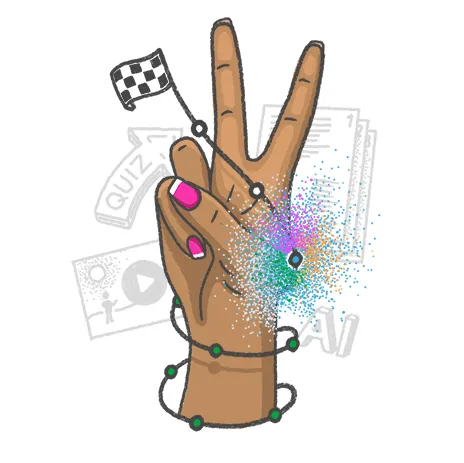What is partner onboarding?
Partner onboarding is the process of welcoming and integrating new partners into your business ecosystem. It’s about equipping them with the knowledge, tools, and support they need to thrive.
Unlike employee onboarding, which focuses on productivity, partner onboarding is about alignment — aligning on expectations, building trust, and ensuring both sides see value quickly.
When done well, partner onboarding ensures that:
- Partners understand your products, services, and values
- Communication is smooth from day one
- Expectations are clear on both sides
- The partnership delivers results faster
Partner onboarding process for B2B partnerships
A strong onboarding process doesn’t just happen. It requires planning, structure, and a clear sequence of steps. While every company’s approach is unique, most effective processes include these stages:
1. Preparation before onboarding
Share agreements, policies, and key documents. Provide access to tools or platforms. Set up introductions with important stakeholders.
2. Welcome and introductions
Send a warm, personalized welcome. Share your company’s mission, vision, and culture. Host a kickoff meeting to set the tone.
3. Training and resources
Deliver product or service training. Provide guides, videos, and onboarding materials. Give partners access to a knowledge hub or support channels.
4. Clear expectations and success metrics
Define roles and responsibilities. Outline KPIs and milestones. Agree on how progress will be measured.
5. Ongoing communication and support
Schedule regular check-ins. Create space for feedback. Keep communication channels open and responsive.
6. Continuous improvement
Gather feedback after onboarding. Refine the process based on lessons learned. Keep the relationship active with long-term engagement.
Partner onboarding checklist
A checklist ensures consistency and prevents important steps from being overlooked. Here’s one you can adapt to your own organization:
- Send welcome message and introductory materials
- Provide access to systems, tools, and documents
- Schedule onboarding kickoff meeting
- Deliver product or service training
- Share company overview and culture guide
- Define roles, responsibilities, and expectations
- Align on KPIs and success milestones
- Plan regular check-ins during the first months
- Collect feedback after onboarding completion
- Continue training and development opportunities
Partner onboarding LMS: Why a learning platform matters
An LMS (Learning Management System) can transform your partner onboarding process. Instead of relying on scattered documents and one-off meetings, an LMS allows you to centralize all training materials, resources, and assessments in one place.
With a partner onboarding LMS, you can:
- Deliver consistent training across all partners
- Track progress and completion with real-time analytics
- Offer interactive and engaging learning experiences
- Update content easily as products and processes evolve
Using an LMS not only makes onboarding more efficient but also ensures every partner receives the same high-quality learning experience — no matter where they are.
Partner onboarding template: A starting point for success
Creating a partner onboarding process from scratch can feel overwhelming. That’s where a partner onboarding template comes in handy. A template gives you a structured framework to build from, making sure you don’t miss key steps.
A strong partner onboarding template should include:
- A timeline of onboarding activities
- Checklists for each phase of the process
- Training resources and links to an LMS or knowledge base
- Guidelines for communication and feedback
- A clear outline of success metrics
By adapting a template to your specific business needs, you save time, reduce errors, and create a repeatable process that scales as your partner network grows.
Conclusion: Stronger partnerships start with strong onboarding
Great onboarding builds trust, reduces friction, and sets the stage for lasting collaboration. With a structured process, a scalable LMS, and a practical template, you can give every partnership a confident start — one that leads to stronger relationships and shared success.
When partners feel supported and aligned from the very beginning, they’re more likely to stay engaged and contribute meaningfully to the growth of both businesses.
Learn more: Partner onboarding best practices and automation
Understanding the process is only the beginning. To truly elevate your partnerships, explore best practices and discover how automation can streamline the experience.
Read our guide on Partner onboarding best practices (and how automed partner onboarding can help) to learn how to:
- Map the onboarding journey effectively
- Strengthen relationships through clear communication
- Automate welcome messages, reminders, and training
- Reduce errors and free up time for strategic collaboration
These insights will give you practical steps to make your partner onboarding both efficient and scalable.






.webp)



.webp)








